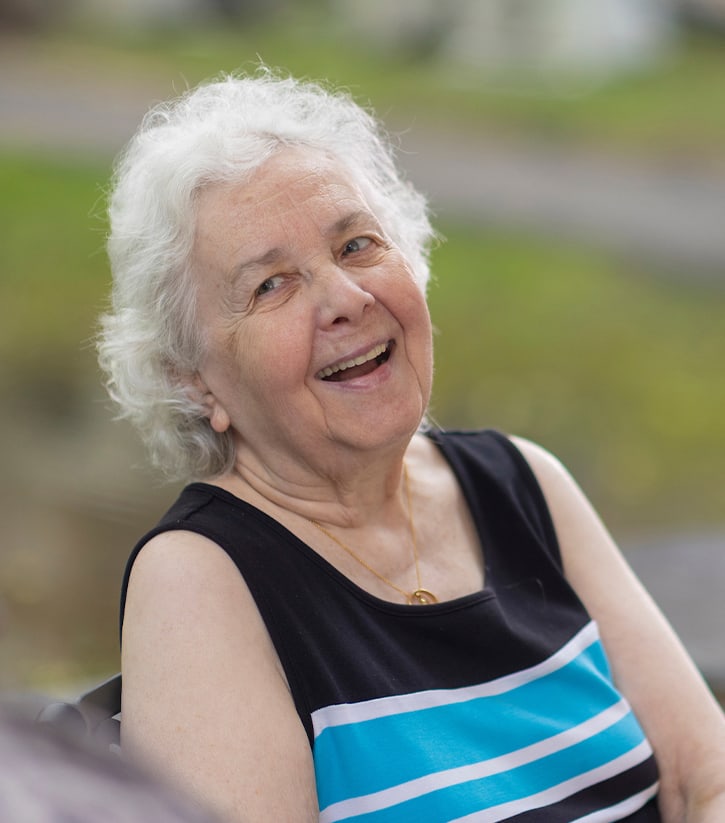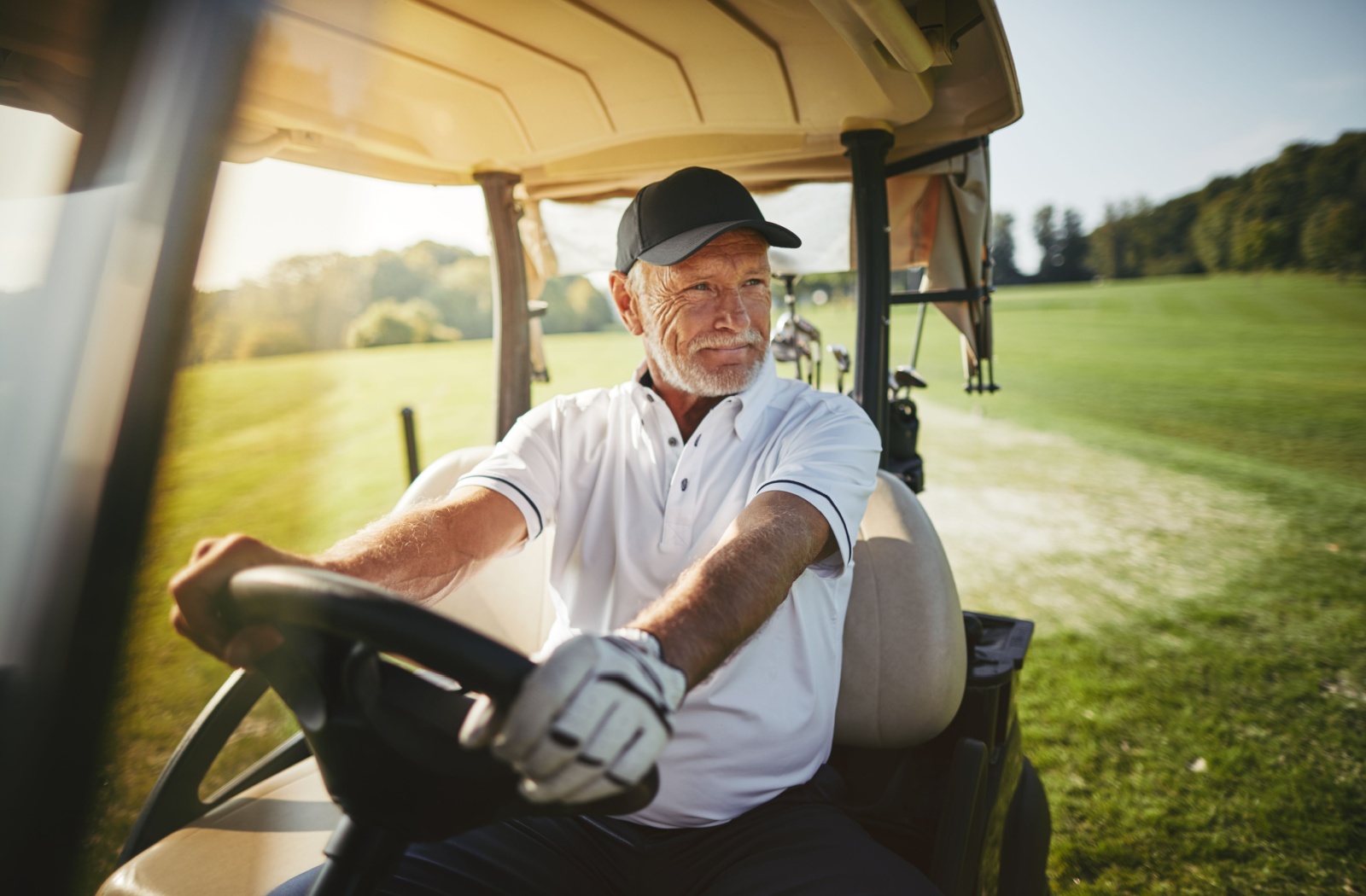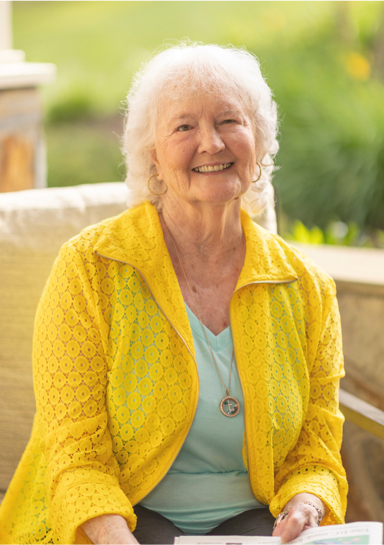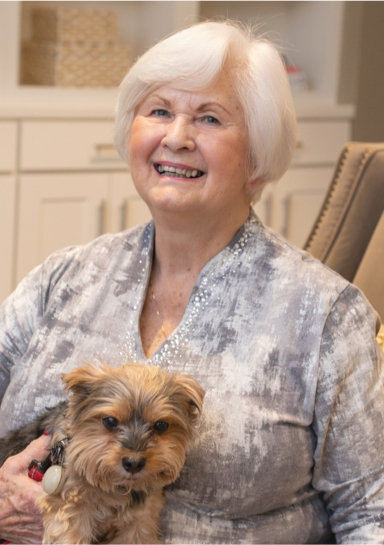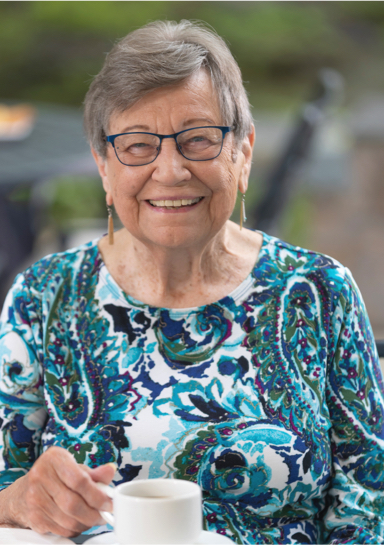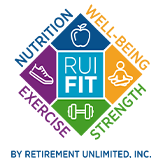Key Takeaways
- Golf-specific exercises improve swing power, balance, and overall game performance
- Regular flexibility and strength training support independent living and daily activities
- Balance exercises reduce fall risk while enhancing golf stability
- A sustainable routine helps you stay active and engaged in your community
- Professional guidance can help you exercise safely and effectively
Golf keeps you active, social, and engaged with your community. Whether you’re new to the game or have been playing for decades, the right exercises can help you enjoy golf well into your later years. Golf-specific fitness starts with understanding general physical activity recommendations. From there, you can search out specific exercises.
Some of the recommended exercises for seniors who want to improve their golf game include:
- Spine rotation stretches
- Hip mobility exercises
- Shoulder and arm flexibility training
- Strength training exercises
- Balance drills
- Core stability movements
These targeted movements support the flexibility, strength, and balance you need to play your game while maintaining the independence you value. At independent living communities, residents often discover how golf exercises enhance their overall quality of life.
Why Golf Exercises Matter for Older Adults
Physical Benefits of Golf-Specific Training
Golf exercises target the specific muscles and movements you use during your swing. These workouts help you generate more power while protecting your joints from strain.
Regular golf conditioning improves your range of motion and helps you maintain proper form throughout your round. When your body moves better, you can focus on enjoying the game instead of working through discomfort. Exercise guidelines for older adults emphasize how targeted physical activity supports both recreational pursuits and daily functioning.
How Exercise Supports Independent Living
The same movements that improve your golf game also support your daily activities. Core strength helps with balance, while flexibility makes reaching and bending easier around your home.
Communities with independent living recognize how staying active contributes to your overall well-being. When you feel strong and stable, you can continue doing the things you love with confidence.
Staying Active in Your Community
Golf exercises often work well in group settings, making them perfect for community fitness programs. You can practice these movements with friends while working toward common goals.
Many senior living communities offer specialized fitness programs that can include golf conditioning. These programs combine social interaction with targeted exercise for a well-rounded approach to staying active.
Flexibility and Mobility Exercises for Better Golf
Thoracic Spine Rotation Stretches
Your thoracic spine needs good rotation for a proper golf swing. Simple seated twists help maintain this mobility while being gentle on your back.
Try sitting in a chair and slowly rotating your upper body left and right. Hold each position for 15–20 seconds and focus on smooth, controlled movements.
Hip Mobility Movements
Hip flexibility affects your swing power and balance throughout your round. Standing hip circles and gentle leg swings help maintain this important range of motion.
You can do these movements while holding onto a chair or wall for support. Start with small movements and gradually increase the range as you feel more comfortable.
Shoulder and Arm Flexibility Work
Shoulder flexibility prevents injury and helps you achieve a full backswing. Arm circles and cross-body stretches keep your shoulders moving freely.
Focus on gentle movements that feel comfortable rather than pushing into painful ranges. Your flexibility will improve gradually with consistent practice.
How Often Should You Stretch
Daily stretching provides the most benefit for golf and daily activities. Even 10–15 minutes of gentle stretching can make a noticeable difference in how you feel.
Morning stretches help prepare your body for the day, while evening stretches can help you relax and maintain flexibility. Find a time that works with your schedule and stick with it.
Strength Training to Improve Your Swing
Core Strengthening Exercises
Your core provides the foundation for every golf swing. Simple exercises like seated marches and gentle planks help build this strength safely.
You can do most core exercises while sitting in a chair or lying on a bed. Focus on engaging your abdominal muscles without straining your back or neck.
Lower Body Power Movements
Strong legs provide the power and stability you need for consistent golf shots. Chair squats and calf raises help build lower body strength using your own body weight.
Start with just a few repetitions and gradually increase as you get stronger. The goal is steady improvement rather than quick results. Low-impact exercises can complement your golf training while being gentle on your joints.
Upper Body Strength for Control
Upper body strength helps you control your club throughout the swing. Light resistance exercises using bands or small weights can build this strength effectively.
Focus on smooth, controlled movements rather than heavy weights. Your golf swing requires coordination and timing more than raw power.
Safe Weight Training Tips
Always start with lighter weights or resistance than you think you need. Proper form and consistent practice matter more than the amount of weight you use.
If you experience pain or discomfort, reduce the intensity or try a different exercise. Your body will tell you what feels right and what doesn’t.

Balance and Stability Workouts
Single-Leg Balance Drills
Standing on one leg challenges your balance system and improves stability during your golf swing. Start by holding onto a chair or wall for support.
Try to hold the position for 10–30 seconds on each leg. As you improve, you can reduce the support or close your eyes for an added challenge.
Weight Transfer Practice
Golf requires smooth weight transfer from your back foot to your front foot. Practice this movement slowly without a club to build muscle memory.
Stand with your feet shoulder-width apart and slowly shift your weight back and forth. Focus on maintaining your balance throughout the movement.
Core Stability Movements
Core stability exercises help you maintain good posture during your swing. Dead bugs and bird dogs challenge your core while being gentle on your spine.
These exercises can be done on a bed or an exercise mat. Move slowly and focus on keeping your core engaged throughout each movement.
Fall Prevention Benefits
Balance exercises for golf also reduce your risk of falls in daily life. Better balance helps you navigate uneven terrain on the golf course and around your home.
Regular balance training builds confidence in your movement patterns. When you feel steady on your feet, you can focus on enjoying activities rather than worrying about stability.
Creating a Sustainable Exercise Routine
Starting Slowly and Building Up
Begin with just 10–15 minutes of exercise every other day. Your body needs time to adapt to new movements and build strength gradually.
Listen to your body and rest when you need to. Consistency matters more than intensity when building long-term fitness habits.
Working Exercise into Your Daily Schedule
Choose a time of day when you have the most energy and fewest distractions. Many people find morning exercise helps them feel energized for the rest of the day.
You can break exercises into smaller sessions throughout the day if that works better for your schedule. Even five minutes of stretching or strength work provides benefits.
Finding Support in Your Community
Group exercise classes provide motivation and social connection while helping you stay consistent. Many communities offer specialized programs for active adults.
Working out with friends makes exercise more enjoyable and helps you stay accountable to your goals. You can share progress and celebrate improvements together.
When to Seek Professional Help
A fitness professional can help you create a safe, effective routine tailored to your specific needs and goals. They can also help you modify exercises if you have physical limitations.
If you experience pain or have concerns about starting an exercise program, talk with your healthcare provider first. They can help determine what types of exercise work for your situation.
Making Golf Part of Your Active Lifestyle
Connecting Exercise to Your Golf Goals
Set specific golf-related goals for your exercise routine, like improving your driving distance or playing 18 holes without fatigue. Having clear targets helps maintain motivation.
Track your progress both in the gym and on the golf course. Notice how your exercise routine translates to better performance and more enjoyment during your rounds.
Social Benefits of Golf and Fitness
Golf combines physical activity with social interaction, making it an ideal hobby for staying connected with your community. Regular playing partners can provide motivation for maintaining your fitness routine.
Many golf communities offer fitness programs designed specifically for players. These programs combine the social aspects you enjoy with the physical preparation you need.
Resources for Continuing Your Journey
At Heatherwood, we understand how important staying active is for your overall well-being. Our RUI FIT program combines fitness with fun and community engagement to help you reach your goals. Whether you’re interested in independent living, assisted living, or memory care, we offer programs that support your active lifestyle.
Ready to learn more? Contact us today to schedule a tour and see how our community can help you continue enjoying golf and staying fit for years to come.
